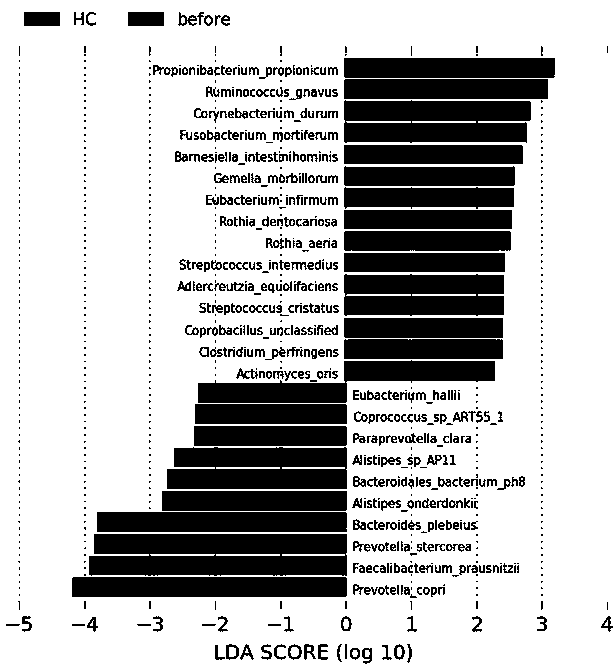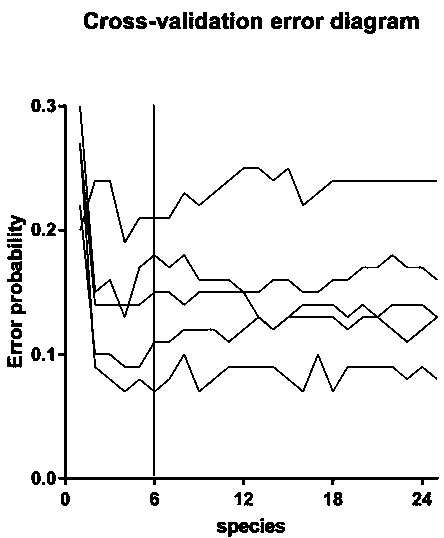Bipolar affective disorder biomarkers based on enteric microorganism and screening and application thereof
A bipolar disorder and biomarker technology, applied in biostatistics, bioinformatics, instruments, etc., can solve problems such as worsening prognosis, increasing the complexity and refractory treatment, and hindering the risk identification of bipolar disorder , with high sensitivity and specificity
- Summary
- Abstract
- Description
- Claims
- Application Information
AI Technical Summary
Problems solved by technology
Method used
Image
Examples
Embodiment
[0048] Collection and processing of samples: the present invention collected stool samples from subjects including patients with bipolar disorder (n=62) and healthy controls (n=60). Among them, in the present invention, the patients with bipolar disorder included in the group are inpatients and / or outpatients who meet the diagnostic criteria of the Diagnostic and Statistical Manual of Mental Disorders (DSM-IV-TR). At the same time meet the following inclusion criteria: 1) have not taken drugs or other psychiatric drugs for at least 3 months; 2) have no obvious suicidal thoughts or previous suicide attempts; 3) have no comorbidity with other mental disorders. Healthy subjects were recruited from the local community without any mental disorders and family history of mental illness. The two groups were matched for age, sex, and body mass index. Exclusion criteria for all subjects included: 1) chronic infection, serious systemic disease (such as diabetes), and autoimmune disease;...
PUM
 Login to View More
Login to View More Abstract
Description
Claims
Application Information
 Login to View More
Login to View More - R&D
- Intellectual Property
- Life Sciences
- Materials
- Tech Scout
- Unparalleled Data Quality
- Higher Quality Content
- 60% Fewer Hallucinations
Browse by: Latest US Patents, China's latest patents, Technical Efficacy Thesaurus, Application Domain, Technology Topic, Popular Technical Reports.
© 2025 PatSnap. All rights reserved.Legal|Privacy policy|Modern Slavery Act Transparency Statement|Sitemap|About US| Contact US: help@patsnap.com



